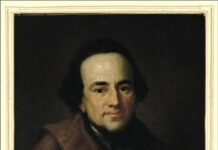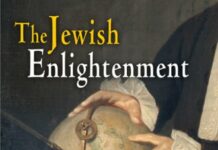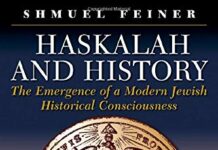
Ebook Info
- Published: 2010
- Number of pages: 352 pages
- Format: PDF
- File Size: 3.56 MB
- Authors: Shmuel Feiner
Description
Winner of the 2010 Shazar Prize for the best book in Jewish historyThroughout the eighteenth century, an ever-sharper distinction emerged between Jews of the old order and those who were self-consciously of a new world. As aspirations for liberation clashed with adherence to tradition, as national, ethnic, cultural, and other alternatives emerged and a long, circuitous search for identity began, it was no longer evident that the definition of Jewishness would be based on the beliefs and practices surrounding the study of the Torah.In The Origins of Jewish Secularization in Eighteenth-Century Europe Shmuel Feiner reconstructs this evolution by listening to the voices of those who participated in the process and by deciphering its cultural codes and meanings. On the one hand, a great majority of observant Jews still accepted the authority of the Talmud and the leadership of the rabbis; on the other, there was a gradually more conspicuous minority of “Epicureans” and “freethinkers.” As the ground shifted, each individual was marked according to his or her place on the path between faith and heresy, between devoutness and permissiveness or indifference.Building on his award-winning Jewish Enlightenment, Feiner unfolds the story of critics of religion, mostly Ashkenazic Jews, who did not take active part in the secular intellectual revival known as the Haskalah. In open or concealed rebellion, Feiner’s subjects lived primarily in the cities of western and central Europe—Altona-Hamburg, Amsterdam, London, Berlin, Breslau, and Prague. They participated as “fashionable” Jews adopting the habits and clothing of the surrounding Gentile society. Several also adopted the deist worldview of Enlightenment Europe, rejecting faith in revelation, the authority of Scripture, and the obligation to observe the commandments.Peering into the synagogue, observing individuals in the coffeehouse or strolling the boulevards, and peeking into the bedroom, Feiner recovers forgotten critics of religion from both the margins and the center of Jewish discourse. His is a pioneering work on the origins of one of the most significant transformations of modern Jewish history.
User’s Reviews
Editorial Reviews: Review A superb study. . . . Feiner lays out a more nuanced and persuasive case for locating the beginning of Jewish secularization in the second half of the 18th century, if not earlier. ― Jewish Review of BooksFeiner’s contribution to the debate about the origins of Jewish modernity is profound. It is, in my view, the most significant contribution in recent decades to the literature on the decline of tradition prior to the age of political emancipation. Its great achievement is that it enlarges the stage of Jewish history, populating it with a wider cast of characters than has been the rule. It should be obligatory reading for all who wish to understand the forces that transformed European Jewish societies in the eighteenth and nineteenth centuries. ― Shofar Book Description Throughout the eighteenth century, an ever-sharper distinction emerged between Jews of the old order and those who were self-consciously of a new world. In this pioneering work Shmuel Feiner reconstructs this evolution by listening to the voices of those who participated in this process by deciphering its cultural codes and meanings. About the Author Shmuel Feiner is Professor of Modern Jewish History at Bar-Ilan University and Chairman of the Jerusalem Leo Baeck Institute. Among his many books is The Jewish Enlightenment, winner of the Koret Jewish Book Award in History and also published by the University of Pennsylvania Press. Excerpt. © Reprinted by permission. All rights reserved. PrefaceOne major difference between the new world, which emerged in Europe as a reality and an image at the dawn of the modern era, and the preceding age, is the dramatic change in the role of religion in human life. The philosopher Charles Taylor recently claimed that the secular age was created in the course of a change that “takes us from a society in which it was virtually impossible not to believe in God, to one in which faith, even for the staunchest believer, is one human possibility among others.” The modern age was marked by the growing tension between the traditional religious structure of the society and culture with the dominant, all-embracing presence of religion, in both private life and the public sphere, and the erosion of this structure by processes of secularization. As it unfolds, the historical story tells of a complex relationship between secular thought and behavior and fundamentalist religious reaction. This is a key narrative of modernization in general and of Jewish modernization in particular.Secularization has been one of the most significant historical processes in Jewish history from the eighteenth century until the present day. The rebellion against the religious norms and discipline demanded by the rabbinical elite, along with the skepticism and religious permissiveness of individuals and groups, may have been openly declared or kept private. In either case, it radically changed Jewish society and culture. Aspirations for liberation clashed with the anxiety of those who were faithful to tradition. It was no longer self-evident that Jewish self-definition would be based on the beliefs and practices of “Torah and commandments.” National, ethnic, cultural, and other alternatives emerged. From this moment in history, a long, circuitous course of “secular” or “religious” searches for identity began, which took on various forms and were attended by severe cultural struggles.Throughout the eighteenth century, the distinction grew sharper between Jews of the old world and Jews of the new world. On the one hand, there was the great majority of observant Jews, elites of talmudic scholars and those who accepted the authority of the rabbinical leadership; on the other, the gradually more conspicuous minority of “freethinking” Jews. At this early stage, the boundaries of the internal split were already drawn and gave the members of the two camps a new identity. This identity marked each individual, labeled his worldview and lifestyle according to his place on the spectrum between faith and heresy, devotion to religious practices and the rabbinical leadership, and permissiveness and indifference. This “sectarian” identity shaped the self-consciousness of the members of each group and strengthened their self-confidence in their way of life and their belief or disbelief. It also functioned as a counter-identity that raised the dividing walls and made each group adopt a position of conflict, suspicion, and even contempt toward other groups. Because secularization is such a central and influential process, the task of tracing its origins, reconstructing its course, and interpreting the furors it aroused is one of the most important tasks facing the historian of Jewish modernization.Was there ever really a religious “sea of faith” that was “once at the full”? Is the Victorian Matthew Arnold’s 1867 lament in “Dover Beach” over the retreat of the “sea of faith” really convincing? Can we go on claiming that God has been driven out of this world, “which has neither joy, nor love, nor light” or that the world has been disenchanted and rationalized, as Max Weber suggested? How is that possible, when right before our eyes, the role of religion is actually increasing in our own time? Does not the term “secularization” itself carry an ideological charge, and is it not being exploited by secularists in order to present the liberal narrative of the inevitable victory of reason over prejudice, superstition, and the tyranny of the old world? Or was it not their purpose to impose this notion on Western culture as a hegemonic narrative? Even if there is some truth in all these claims, the author of this book joins those historians who reject the sociological and philosophical challenge to the secularization thesis. I am among those who wish to describe, understand, and interpret the historical processes that led Europe to the profound, all-embracing change in the status of religion in the life of the individual, the society, and the state, and who define this change as “secularization.”At the entrance to the field of secularization, said José Casanova, “there should always hang the sign ‘Proceed at your own risk.’ ” This book takes that risk and insists, with the few “old believers,” that “the theory of secularization still has much explanatory value in attempting to account for modern historical process.”Throughout this book, secularization will be used in those clear terms coined forty years ago by Peter L. Berger. These terms are very useful for those who, as he does, regard secularization as a process of vast importance in modern history that can be reconstructed: “By secularization we mean the process by which sectors of society and culture are removed from the domination of religious institutions and symbols.… It affected the totality of cultural life and of ideation…. Moreover, it is implied here that the process of secularization has a subjective side as well. As there is a secularization of society and culture, so is there a secularization of consciousness. Put simply, this means that the modern West has produced an increasing number of individuals who look upon the world and their own lives without the benefit of religious interpretations.”In addition to these insights of Berger’s, this book is also guided by the definitions of “religion” and “secularization” recently proposed by Hugh McLeod, British social historian of secularization in Europe. These definitions are apt for a historian wishing to describe and interpret the origins of secularization among European Jewry. “Religion” means faith in a merciful, omnipotent creator of the world and that obedience to his commandments and devout worship, together with all the practices and institutions based on this faith, are the only true way of ensuring a good life for the individual and the group. “Secularization” is not a single, unidirectional path that leads outside the religion. It is, rather, a historical process that occurred in various spheres in the life of the individual, the society, and the state. The weakening of the Christian religion’s status and power and the replacements of its institutions and clergy by state institutions and officials were among the most significant manifestations of secularization in Europe. Of course, no comparable ecclesiastical hierarchy with political power existed in European Jewish society, but other aspects of the “religion-secularization” tension in Europe were also applicable in the Jewish case. The emphasis here will be on secularization in the personal and social spheres, and the key questions to be asked in the Jewish context are taken from the more general questions asked in relation to modern Europe: How, why, and to what extent did the religious worldview and the commitment to observe religious commandments decline among individuals and groups, and what was the historical meaning of secularization among eighteenth-century European Jewry?The religious laxity, modern acculturation, and philosophical criticism of religion that marked the onset of the Jewish retreat from religion began as far back as the seventeenth century among former conversos in Western Sephardic communities (especially in Amsterdam) and among the wealthy families of Ashkenazic “court Jews” in central Europe. In retrospect, the contribution of the eighteenth century to the historical course of Jewish secularization seems particularly significant. As I will argue in this book, in this century lie the roots of the process that shaped and furthered secularization of Jewish society in modern Europe. Research on the Haskalah has pointed to several revolutionary processes of secularization in the eighteenth century that were spearheaded by Jewish scholars, writers, and philosophers.Two historical developments were particularly significant because of their long-term implications. One was the secularization of the personal and collective self-consciousness among the maskilim, who, in fact, invented “modernity” and the modern self-identity of Jews. They created the historical narrative that explained the changes in the modern era and justified the need to invest efforts to reform the cultural, social, and even political life of Jews, and also operated a system of communication and propaganda to persuade a broad Jewish public to adopt modern consciousness, with its promise of a better future for the individual and the Jewish people.The second development was the secularization of the intellectual elite. During the eighteenth century, an elite of writers appeared and broke the monopoly of the rabbinical elite over the culture, books, education, and guidance of the public. The conflict between the old and new elites ignited a long-enduring Kulturkampf that drew one of the many boundary lines that divided late eighteenth-century Jewry. This new elite was secular as far as its source of authority, agenda, and cultural activity were concerned. It was attentive to the European Enlightenment and its liberal, rationalist, and humanistic values.In my book Haskalah and History (2002), I described the first revolution that secularized the self-consciousness of the maskilim and invented the “Jewish modern age” as a belief and an aspiration. In my second book, The Jewish Enlightenment (2004), I described the revolution that gave birth to the secular Jewish intellectual who broke away from the rabbinical elite and challenged it. The present book, The Origins of Jewish Secularization, relates the historical story of the Jewish critics of religion in the eighteenth century. They are mostly Ashkenazic Jews who did not take an active part in the cultural revival of the Haskalah, but out of open or concealed rebellion, a solid philosophical view or indifference, fashioned modes of thought and behavior that were free of the dictates of religion and rabbinical supervision. Many participated as “fashionable” Jews in the process of modern acculturation, and many adopted the deist worldview that was then widespread in Europe and rejected faith in revelation, the authority of the Scriptures, divine intervention in human life, and the obligation to observe the commandments.As we shall see in this book, at the time quite a few Jews and non-Jews identified those individuals and groups as belonging to the “sect of epicureans.” They pointed out that Jews in various European cities were casting off the burden of religion and warned against the tendency to submit to the temptations of the city at the expense of religious commitment. Nonetheless, in the familiar historical picture, secularization is still a “white spot” on the map of eighteenth-century Jewish culture and society. One goal of this book is to highlight that spot. But beyond collecting evidence of the existence of the “sect of epicureans,” the book also will argue that in order to gain a precise, profound insight into Jewish modernization in general, as well as into the historical role of the Haskalah (which simultaneously represented a reaction to secularization and a secular revolution), it is essential to understand how aware of secularization the members of that generation were. This understanding will enable us to correctly interpret the intensity of the “orthodox” reaction and to reconstruct the onset of the internal cultural-social split and the creation of boundary lines between religious and secular Jews.What means are at the disposal of a historian who undertakes to expose the “sect of epicureans”? “Fashionable” Jews, freethinkers, and deists left behind hardly any texts depicting their worldview; nor did they justify their way of life in writing. To construct the scaffolding and to begin building a picture of secularization in the eighteenth century, one needs a sensitive ear open to the voices emanating from hostile witnesses, from numerous, little-known sources, and from expressions of defiance against religion and its representatives, recorded in various parts of the Jewish world. Old and new studies describing the changes that occurred in various communities in Europe are invaluable in reconstructing the roots of secularization. Two are particularly important: Azriel Shohet’s 1960 Im hilufei tekufot (Changing Eras), which provides a plentitude of evidence of the erosion in religious discipline among German Jews; and Todd Endelman’s 1979 The Jews of Georgian England, which focuses on the process of modern acculturation undergone by English JewsThis book does not propose a study of the social history of secularization, nor does it provide quantitative data on the weakened hold of religion among Jews in the communities of Europe. It is also not a history of ideas that systematically traces the development of religious skepticism and criticism of religion among Jewish philosophers from Spinoza and thereafter. It would be more correct to view this book as a cultural history of secularization that combines two major dimensions of the historical process: a change in behavior and practice and a change in attitudes toward religious beliefs and demands. It strives to describe, interpret, and decipher the codes concealed in critical texts and in behavior that crosses the boundaries of what was previously considered normative in Judaism. It also seeks to measure the intensity of the social tension caused by the emergence of Jewish secularization.The cultural history of secularization pays close attention to the language and rhetoric in which the internal Jewish discourse was conducted on religious discipline, the validity of the duty to observe commandments, and the proper behavior for a Jew in an era of varied fashions, manners, and leisure activities. It tries to give voice to people who wanted to cast off the burden of religion and to be free to enjoy the many opportunities that the European city offered them. It also tries to listen to the voices of anxiety of all those who were convinced that the old world was coming to an end in a crisis of loss of faith and moral anarchy. To achieve this, the historian casts the beam of his lamp on Jewish deists, hedonists, the religiously lax, and the “guardians” of the religion. He does this while focusing mainly on the Ashkenazic society in the cities of Western and Central Europe, particularly Altona-Hamburg, Amsterdam, London, Berlin, Breslau, and Prague.Here and there, he looks at the Jews of the largest center of that century in Poland-Lithuania. This book attempts to open a series of windows through which to look at all shades of secularization throughout an entire century. It will relate to the fears of the rabbinical elite regarding “damned sects” of epicureans in the first half of the century, to accelerating secularization in the second half of the century, and to the sharpening of cultural and social boundaries in the 1770s and 1780s between Jews who wished to enjoy the full pleasures of the new world and those for whom this was a threatening, “upside-down” world. Finally, it will look at the conflict between the “believers” and the “freethinkers” toward the end of the eighteenth century. We will peer into a synagogue or a bedroom, observe Jews sitting in a coffeehouse or strolling on a boulevard, illuminate forgotten critics of religion from both the margins and the center of Jewish discourse, and listen to the direct and indirect dialogue that was constantly conducted between “epicureans” and “guardians of the religion.” All these will blend here into the story of the origins of secularization in eighteenth-century European Jewry.We can only hope that in the wake of this book, other scholars will complete the picture of secularization with systematic studies that will cast light on what took place in the communal structure and organization in various communities of Europe, describe how the power of the rabbinical elite was questioned and altered, and explain how the nature of decision making by the communal mechanisms changed. They may also undertake to assign the correct weight in the process of secularization to the intervention of the modern state in the lives of the Jews and to the effects of economic and demographic changes. Read more
Reviews from Amazon users which were colected at the time this book was published on the website:
⭐Important book on the beginning of the end of the Jews as a single religious group ands thir inclusion in European society. As always without any respect for their peculiar needs or values
⭐
⭐
⭐
⭐
Keywords
Free Download The Origins of Jewish Secularization in Eighteenth-Century Europe (Jewish Culture and Contexts) in PDF format
The Origins of Jewish Secularization in Eighteenth-Century Europe (Jewish Culture and Contexts) PDF Free Download
Download The Origins of Jewish Secularization in Eighteenth-Century Europe (Jewish Culture and Contexts) 2010 PDF Free
The Origins of Jewish Secularization in Eighteenth-Century Europe (Jewish Culture and Contexts) 2010 PDF Free Download
Download The Origins of Jewish Secularization in Eighteenth-Century Europe (Jewish Culture and Contexts) PDF
Free Download Ebook The Origins of Jewish Secularization in Eighteenth-Century Europe (Jewish Culture and Contexts)



